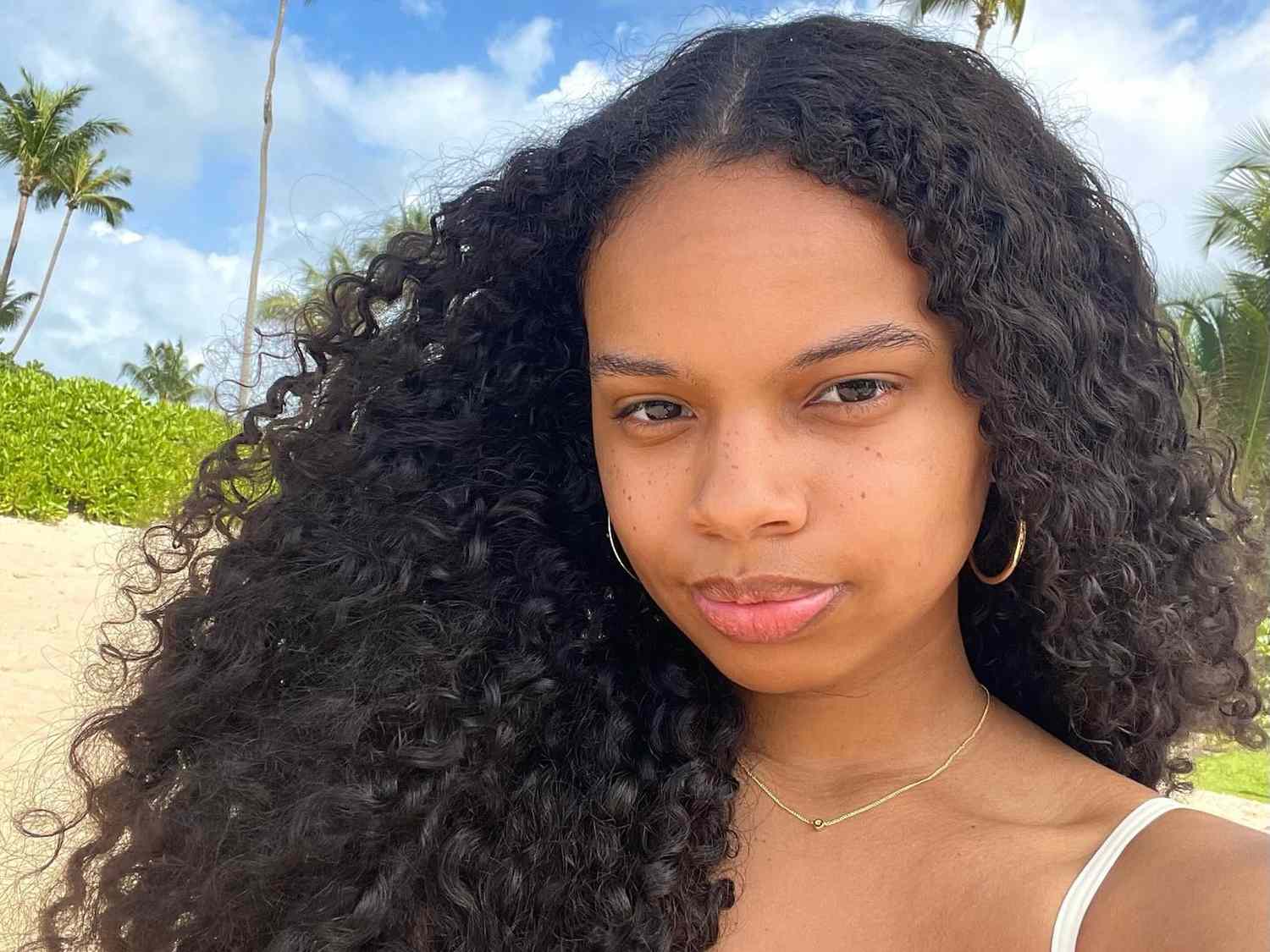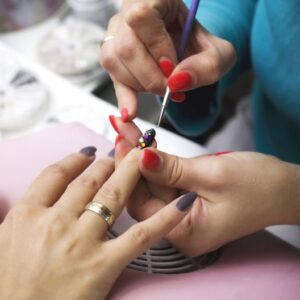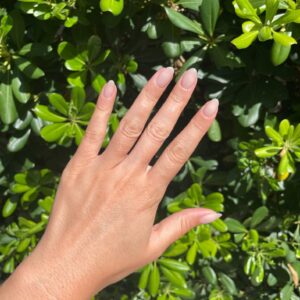
@oliviahancock_ / Instagram
In This Article
Types of Hair Oil Which Should You Use? Benefits How to Use It Additional Tips The Final Takeaway
Sometimes we use a product because we think we should, but we don’t really understand why we’re doing it. Such can be the case with hair oil: You’re not alone if you’re wondering whether you even need it, what it can do for you, or how to get started. Hair oil has several potential benefits and types, and you’ll want to choose the product that best suits your hair and scalp. Ahead, we spoke with a stylist and a dermatologist to learn exactly how to use hair oil, from the ways it can benefit your strands to where to work it into your routine.
Meet the Expert
- Justine Park, MD, is a board-certified dermatologist at Skin and Beauty Center in West Hills, California.
- Raven Hurtado is a stylist at Maxine Salon in Chicago.
Types of Hair Oil
When it comes to hair oils as a product type, «there are two types of oils for hair: One is a moisturizing oil and the other a sealing oil,» says stylist Raven Hurtado. As you might suspect, each of these has a unique purpose. «Moisturizing oils are good for intense hydration, and sealing oils seal and lock in moisture that’s already in the hair,» she says. In addition to formulas marketed as dedicated hair oils, you can also use individual oils (like essential oils) on your hair—some of which you may find in certain hair products.
How to Choose a Hair Oil
Choosing a hair oil depends on your hair type and goals. «There are many different types of hair oil, and not one is necessarily superior to the other,» says board-certified dermatologist Justine Park, MD. «Depending on each individual’s need, there may be one that is preferred to use over another. If hair loss is your main concern, I would recommend rosemary oil, as it is known to stimulate hair growth. However, if your main concern is dandruff, you could consider using tea tree or coconut oil to help limit the extent of yeast on the scalp.» We’ve tested the best hair oils extensively, and our winners include the Olaplex No. 9 Bonding Oil and L’Oréal Paris Extraordinary Oil.
The Benefits
Given the fact that a whole range of different hair oils exist, the benefits also vary. That being said, a few of the main perks are as follows:
- Can prevent damage: This applies specifically to when you use a hair oil before shampooing your hair. «With a a moisturizing oil, you can use it as a pre-treatment before shampoo to nourish and moisturize hair,» Hurtado tells us
- Improves scalp and hair health: These oils can be nourishing for both your hair and your scalp. Hurtado explains that a hair oil «can reduce dryness, as well as scalp dryness, and also promotes healthy hair.»
- Seals in moisture: A hair oil made for «sealing» can keep your hair from losing moisture. «A sealing oil keeps moisture in the hair, protects the ends (reducing split ends), and provides shine,» Hurtado says.
- Good value: Park notes that when using individual oils, «not only are they safe, but they are generally very economical and easy to access and apply.»
How to Use Hair Oil
When it comes to how to use hair oil, that depends on your hair type and what you want to achieve. There are uses for almost every part of your hair care routine, so you can pick whichever best fits your lifestyle and goals.
- As a pre-shampoo treatment: When using a hair oil before shampooing, apply it while your hair is still dry. «Apply three to four pumps of a moisturizing oil from scalp to ends, and let it sit for five to 10 minutes before shampooing,» Hurtado tells us. «This helps nourish the scalp.» This is also beneficial for people whose hair tends to tangle easily—you can brush through your hair before washing once the oil has worked its magic.
- Post-wash: It also can be beneficial to use a hair oil after you wash and condition. «To use a moisturizing oil, apply three to four pumps depending on thickness of the hair and distribute the oil from roots to ends,» Hurtado advises. «[Once it’s in], you can blow dry your hair while using it or let it air dry.»
- Paired with a leave-in conditioner: Hair oil can be the last step in your routine before drying if its purpose is for sealing. «To use a sealing oil, apply it on hair after you’ve applied a leave-in conditioner to lock in moisture and reduce frizz,» Hurtado explains.
- As a scalp treatment: You can use hair oils (including individual essential oils) on your scalp, as well. Rosemary oil has the potential to help hair grow, and tea tree oil can be beneficial for anyone whose scalp tends to get itchy. To use an essential oil on your hair outside of a product. it’s contained in, you’ll always want to pair it with a carrier oil, such as jojoba. Start with a few drops in a bottle of carrier oil, then apply the mixture to your scalp. You can gradually add more drops of the treatment oil, but err on the side of caution, as these can be irritating in excess.
Additional Tips
The best way to use hair oil isn't just dependent on which one you choose or where to put it in your routine. It also matters that it's the right frequency and type for your own hair and scalp needs.
Frequency Depends on Hair Type
How often you use a moisturizing oil should be based mostly on the type of hair you have. «If you have tight curls, you may want to use oils daily to condition your hair and keep it smooth and manageable,» Park says. «However, if you have fine hair, you would want to use oils once a week at the most, and not necessarily on the hair itself—but on the scalp, to stimulate healthy hair growth and thicker hair.» Hurtado says that on average, «you should use hair oils at least once or twice a week to nourish and soften the hair.»
Consider Your Routine
Hair oil can pair with many of the haircare products you're already using, but that said, you'll want to make sure you aren't using more products than your hair actually needs. "You can combine products together to get your desired look, but not too many, as you want to avoid stickiness and buildup," Hurtado tells us. If you notice either of these occurring, scale back or discontinue any products that might not be necessary.
Watch Out for Side Effects
The main things to look out for when using a hair oil are buildup and irritation. "The side effects of using hair oils are that they can clog pores if you use too much or if you apply them daily," Hurtado says. To keep watch for this, be on the lookout for your hair appearing greasy at the roots, as well as for any signs of irritation, such as itching or redness. If either occur, discontinue your use.
Overall, hair oil is a very safe type of product. "In general, there are no safety issues when it comes to using hair oil, other than local skin irritation or potential irritation of the eyes, nose and throat, especially with essential oils such as tea tree oil or rosemary oil," Park says.
The Final Takeaway
Hair oil is a great way to boost hydration and shine, seal in moisture, prevent damage, improve your scalp, and encourage healthy growth. It's pretty straightforward to use, and depending on which type you choose, you can integrate it into various parts of your routine. You'll want to be careful not to overuse hair oil in order to avoid buildup and irritation, but it's generally a safe product that can benefit most hair types. When adding a hair oil to your regime, make your choice based on your goals, hair texture, and the condition of your scalp. Once you find the right one, it might be just what your hair needs to go from decent to fabulous.


